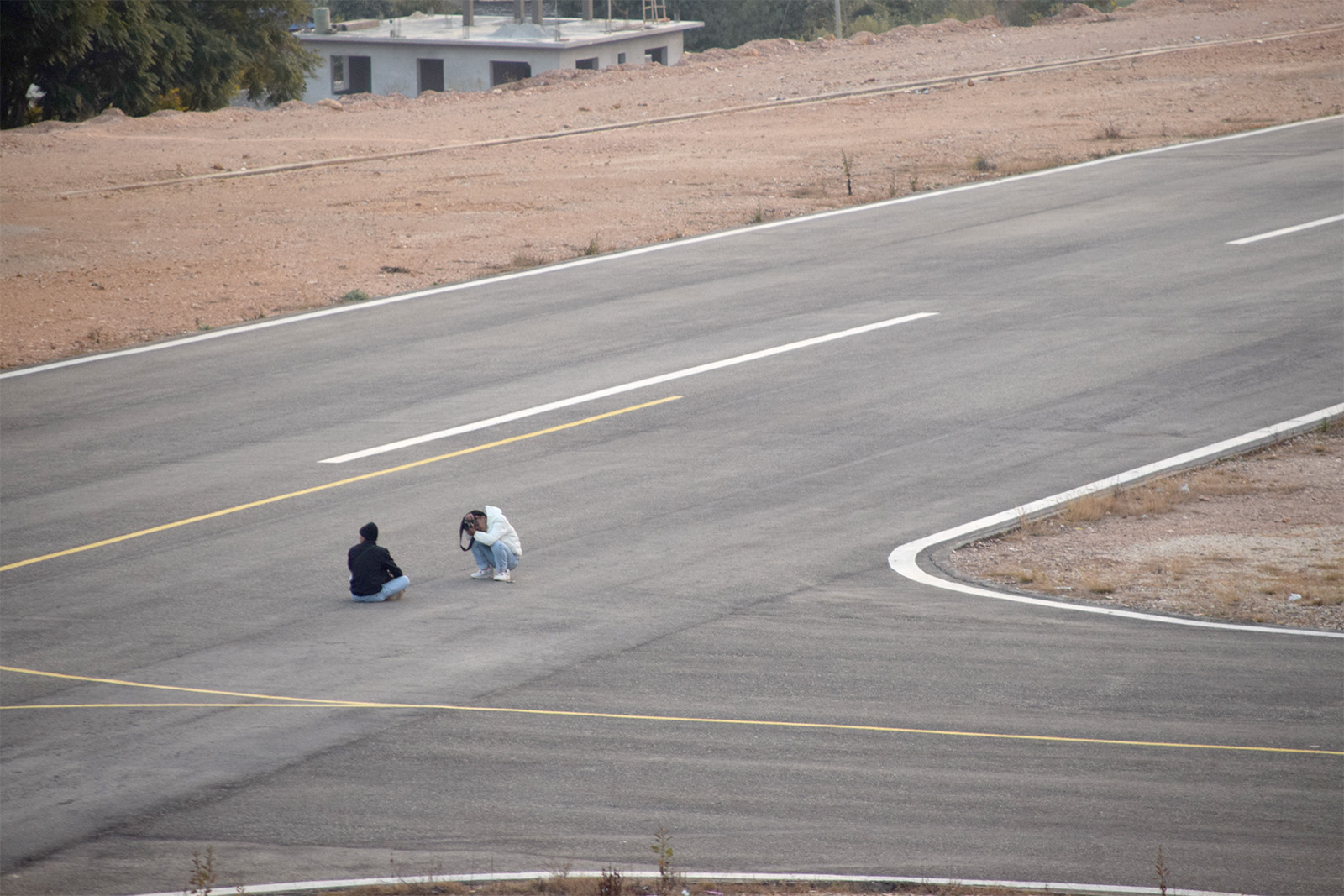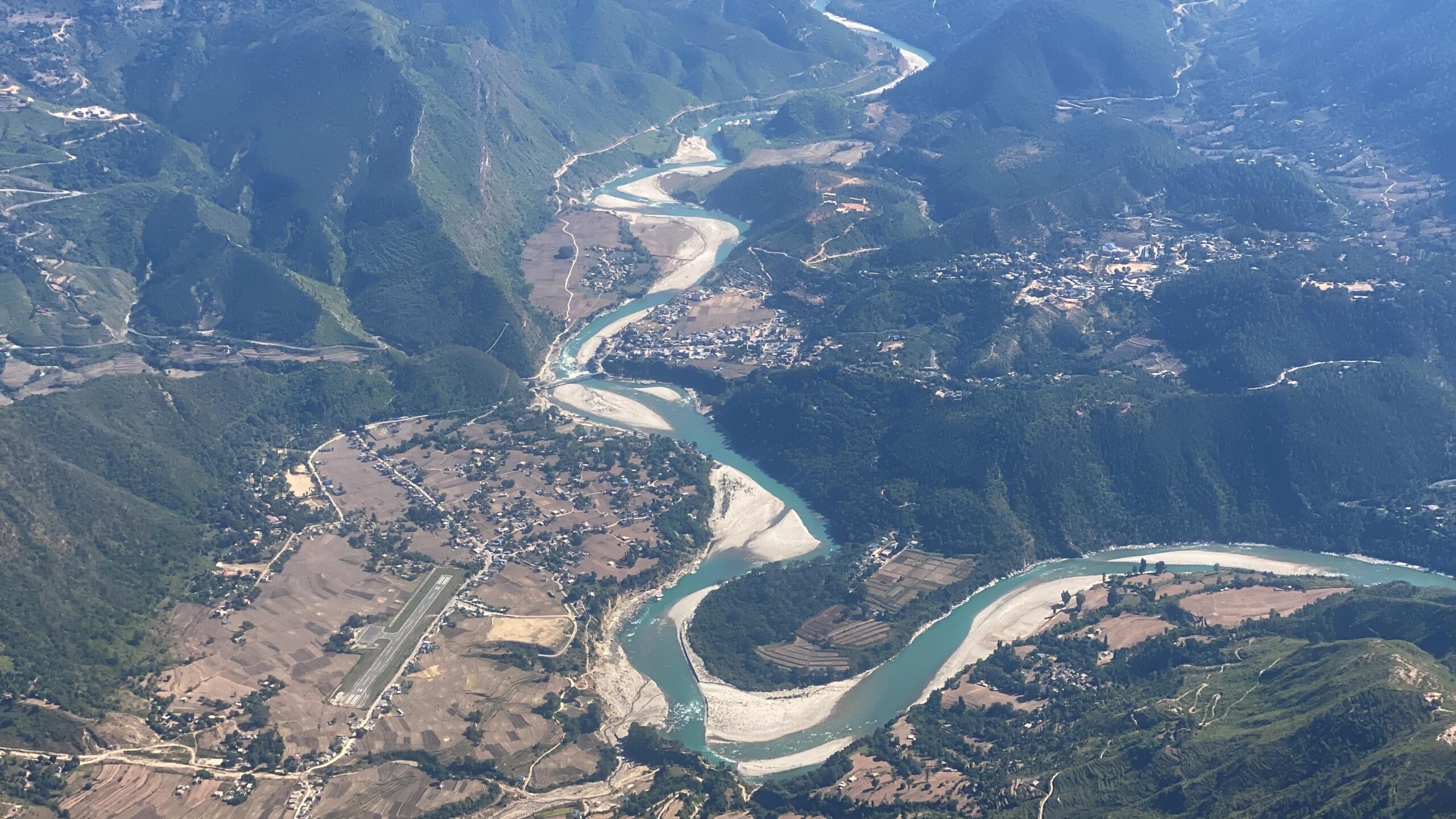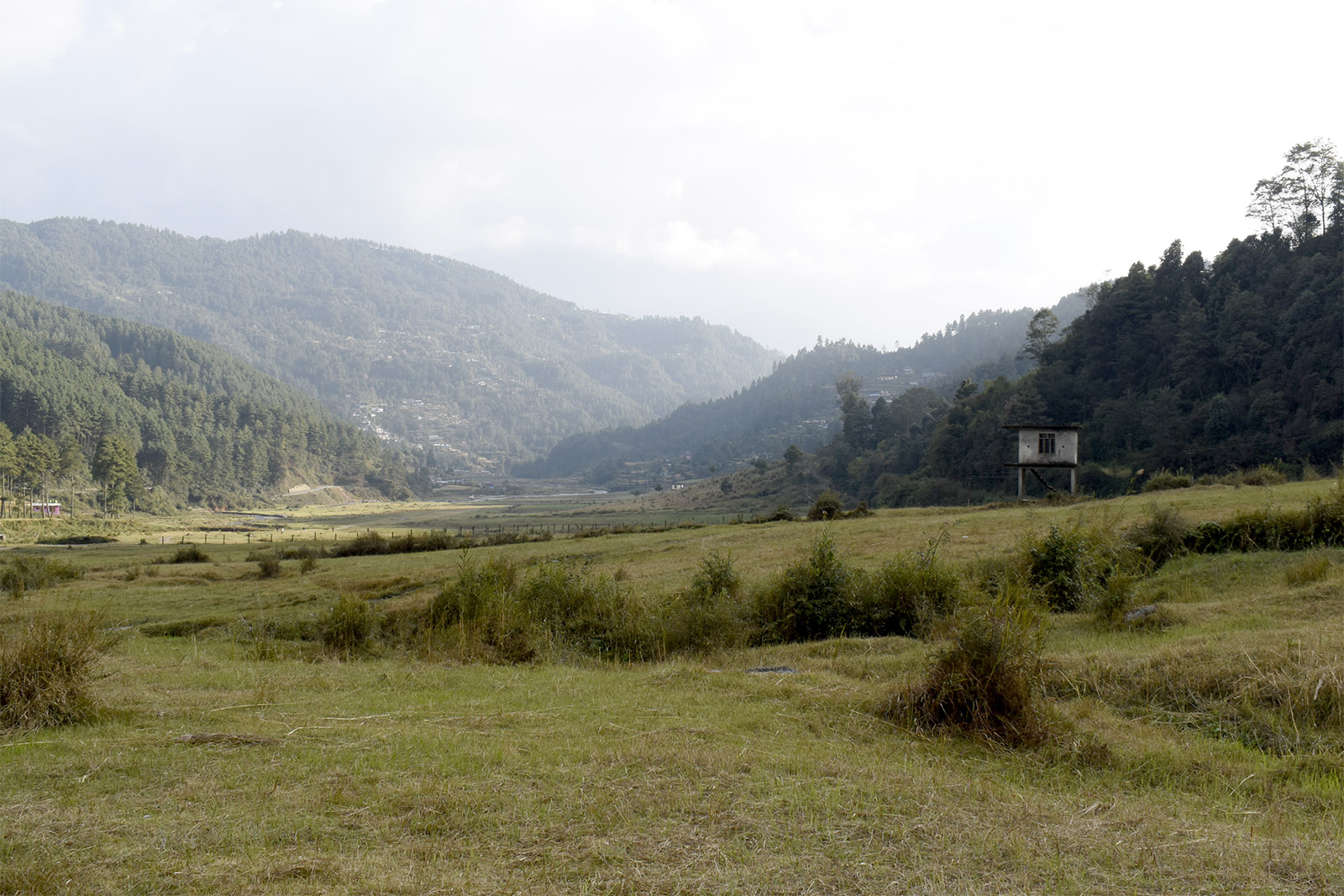Even if the existing airports are being closed for a lack of passengers, the race for opening the new ones continues unabated. Why is this phenomenon on the rise and who does it really benefit?
Basanta Pratap Singh and Bidhya Rai |CIJ Nepal
In a television interview a few weeks ago, Dharan’s independent mayor Harka Sampang made a rather outlandish comparison between airports and toilets. “Why build a toilet at my home when there’s already one in my neighbour’s!” Sampang replied, upon being asked why there was a need for an airport in Dharan when there was already one in Biratnagar. “Do I always use the neighbour’s toilet?”
Sampang’s statement perhaps exemplifies what people’s representatives in Nepal think about airport construction. The list of irregularities and illegal antics carried out in the name of airport construction runs long. Selfish motives such as expanding the vote bank and lure of commissions are usually behind airport construction in the country. Many airports that were built breaching laws and guidelines and spending big amounts from state coffers are now closed.

Patan airport, Baitadi. Basanta Pratap Singh
In Baitadi’s Patan airport, for instance, a plane landed only in Asoj 2077 BS, 26 years after it was constructed in 2051 BS. The then tourism minister Yogesh Bhattarai was aboard that test flight. The airport has remained closed after a year. The airport’s runway has now turned into a space where cattle graze, youths shoot TikTok videos and locals take walks. “There were about 15-16 flights during the period when the airport opened (between Asoj 2077 and Chaitra 2078),” said Kishor Khadka, who is the Sudurpaschim province representative of Summit Air, which conducted flights to the Patan airport. “In the beginning, there were two flights a week. Then, when passengers thinned out, there was a flight a week. The flight quorum was still insufficient and we discontinued flights.” According to the Civil Aviation Authority, for the airport’s resumption, the government spent Rs 160 million and 200 thousand. In the past three years since the resumption of the airport, the government has spent Rs 1.4 million and 23 thousand merely to keep the office operating.
What is surprising is that despite Patan airport’s closure due to passenger crunch, a big amount is being spent in the name of airport construction in Darchula and Dadheldhura, which lie a few hours away. Rs 30 million has been already spent for the construction of Gokuleshwar Airport on the bank of Chamelia river in Darchula while it is estimated to cost an extra Rs 200 million. The distance between Gokuleshwar and Patan airports is 68 km (12.27 nautical miles). Another airport has been proposed in Dadeldhura, which lies about 6 nautical miles away from Patan airport. In Poush 2078, the then tourism minister Prem Bahadur Ale Magar had disbursed Rs 5 million for the feasibility study of Dadeldhura airport. But section 5.7.1 of the Aviation Policy 2063 mandates that ‘the distance between the proposed airport and the nearest airport must be generally 20 nautical miles in mountainous and hilly areas’.
The Dipayal airport, which lies about 57 km from Dadheldhura, also remains closed. This airport underwent a facelift eight years ago at the cost of Rs 53 million and 400 thousand but there were no passengers. In the past decade, the office operation cost of the airport amounted to Rs 8 millions and 110 thousands. On Poush 11, 2078 BS, a meeting of the Civil Aviation Authority Nepal chaired by then Minister of Tourism and Civil Aviation Prem Bahadur Ale Magar disbursed Rs 1 billion 321 million and 48 thousand at once for 10 airports in the Sudurpaschim province. Of these, only two, Dhangadhi and Bajura airports, are currently in regular operation. Planes reach Bajhang and Sanfebagar only occasionally. Of the budget disbursed by minister Ale, Rs 30 million was allocated for Sanfebagar and as much for Kamalbazar airport’s facelift. The two airports lie at a distance of 12 nautical miles and 67 km by road.
In the meantime, Minister Ale had disbursed Rs 25.1 million for Mahendranagar airport, which lies about an hour’s road distance and 26 nautical miles away from the Dhangadhi regional airport. The Aviation Policy 2063 BS mandates that the distance between two airports in the Terai should be at least 40 nautical miles. The Mahendranagar airport, which was established in 2030 BS, underwent a facelift and was inaugurated again on Poush 28, 2078 BS. That authorities are ignoring development that would ease lives and instead investing in needless, illicit airports hasn’t sat well with the locals of the Sudurpaschim province, which lacks even the basic infrastructures. “People are dying here for a lack of basic health service. If there was investment towards this sector, that would help people,” says Ganesh Magar, a local activist from Dadheldhura who promotes tourism in Sudurpaschim and Karnali provinces. “They could’ve also invested to upgrade basic tourism infrastructure.”
Runways encroached upon
The race for needless airports continues throughout the country. According to the Civil Aviation Authority’s website, there are 55 airports in the country, including three international ones. Of the 52 internal airports, 18 from Darchula to Okhaldhunga are currently defunct. Besides these, the Authority has claimed that two defunct airports, Baitadi’s Patan and Doti’s Dipayal, are currently in operation. Even though airports in Kamalbazar and Kalikot are said to be under construction, the runway in the latter is already blacktopped. Another airport in Arghakhanchi is also under construction.
These airports that do not see planes anymore have turned into pasture lands and sports grounds. Houses and roads have been constructed in Gorkha airport’s space. There are roads in the spaces of Meghauli and Mahendranagar airports. Locals have constructed a concrete road through Tikapur airport’s runway. We had asked for information about the cost of land acquisition, infrastructure construction, machinery and office operational cost of all 23 defunct airports with the Civil Aviation Authority. But the Authority was reluctant to provide information sought under rights to information. After repeated requests, the Authority finally provided some incomplete information on Mangsir 25 after warning from the National Information Commission. After checking the information received from the Authority, an Auditor General’s report, and those stored in the Authority’s website, we determined that these 23 airports had incurred a cost of over Rs 1 billion and 670 million in the past decade.
Technical officials from the Authority have recommended that Tikapur airport can’t function since it has a short runway and there are settlements around it. “But the airport still receives a budget, about Rs 1.5-2 million per year. Officials pretend they have done some work, like sprinkling gravel on the runway, and spent the budget,” says Yogesh Rawal, a local of Tikapur who is also the chair of Federal of Nepali Journalists’ Sudurpaschim province committee. “It’s certain that the airport will not function anymore but the budget keeps on coming.”
Fault in the studies
The Authority’s illegal antics and irregularities committed under pressure from political leaders has rendered large investment from the state unproductive. So much so that even the feasibility study reports are laden with false statistics, as the Auditor General’s report last year showed.
“That 19 airports lie idle for a lack of air transport operation shows that the data on the feasibility study reports are not realistic,” the report says. But the Authority’s deputy director general and spokesperson Jagannath Niraula says that airports are being built as they show promise under the plans and policies of the state. “Airports are built to provide service and facilities to the local people. They are built because they show promise during feasibility study,” Niraula says. “They will obviously operate once the aircraft come!” According to the Auditor General’s report, as much as Rs 50 billion 191 million and 700 thousands has been invested so far from state coffers for airport construction.

Dipayal airpor, Doti. Photo Basanta Prataba Singh
So why are airports being built by preparing faulty feasibility study reports only to abandon them later? Officials at the Civil Aviation Authority say that even if some airports are not functioning now, they will be of use during disasters and emergency security situations, so investment on them wouldn’t go to waste. But the auditor’s general’s report says that discussing the airports’ alternative use without operating air transport through them would not justify the airports’ construction. The auditor general’s report hints that feasibility studies are prepared with false data for the construction of illicit airports, all to scoop up budgets in the name of airports.
The country’s political leaders, including ministers, lawmakers, local unit representatives and even incumbent and former prime ministers, have openly abused their authority to construct airports that are just ‘for show’. The Falgunanda Sukilumba airport, which doesn’t see regular flights, was constructed under pressure from then prime minister Jhalanath Khanal. As much as Rs 250 million has been so far invested in the airport whose construction started in 2067-68 BS. The Khiji Chandeshwari airport, built on the insistence of Congress leader Bal Bahadur KC at the cost of Rs 30 million, is yet to come into operation. The airport was conceived in 2058 BS when KC was the minister for tourism and civil aviation. The airport was completed in 2076 BS and inaugurated with a test flight from Tara Air test’s twin otter. That flight carried then tourism minister Yogesh Bhattarai and former KC himself. There have been no flights to or from the airport since.
Another airport that many candidates for local units have been making their electoral agenda is the proposed airport in Dharan’s Dandaghopa. One can reach Dharan by road from Biratnagar in one-and-half hours through the six-lane blacktopped road. But leaders have been harping on about the construction of Dandaghopa for two decades. In 2060 BS, then mayor of Dharan Manoj Kumar Menyangbo took the lead for land management for the proposed airport. Multiple tourism and civil aviation ministers after then—Lokendra Bista Magar in 2068, Bhim Prasad Acharya in 2070, Kripasur Sherpa in 2072, and Jeevan Bahadur Shahi in 2073—made on-site visits to the proposed airport location. A detailed engineering survey and environment impact assessment were conducted. Since then, local unit representatives have been making this airport their electoral agenda. Recently, Dharan Mayor Harka Sampang asked Tourism Minister Sudan Kirati, a Maoist leader from Bhojpur, to help construct the airport. “The distance between Dharan and Biratnagar is just 40 km and one can travel back and forth by road on a motorcycle or car,” says Ramesh Thapa, a Dharan-based businessman. “Why is there a need for an airport in Dharan?”
During the budget statement on 2075 Jestha 15 when Yubaraj Khatiwada was the finance minister, airports were announced from an alternative airport in Narayanpur, Dang to one in Kavre. The finance minister had allocated Rs 5 million for land acquisition for the airport in Narayanpur. That same year, the government put forward proposals for new airports in a dozen places including Dharan, Narayanpur, Kavre, Dhankuta, Gudel in Solukhumbu, Madankhola in Humla, Ranitar in Panchthar, Swargadwari in Pyuthan, Chuhandanda in Tehrathum, Jogidaha in Udayapur, Arangkot in Baglung and Charang in Mustang. Preliminary studies for these airports have already been conducted. If one goes through the budget statements between fiscal year 2070-71 and 2080-81, one finds proposals for airports in 20 locations.
The proposed Sagarmatha airport in Jogidaha, Udayapur is another example that shows how airport proposals are being used to meet strictly political interests. After an EIA was conducted in 2078 BS, as many as 13,687 trees from the local community forest were felled and sold. According to data from the Civil Aviation Authority, it spent Rs 24.7 million to start airport construction by managing trees. Foundation stones were laid in three places for a single airport. While the airport is not constructed yet, the budget for the current fiscal year says it will be upgraded. According to Division Forest Office Udayapur, the airport was announced in the budget statement in 2070 BS when Narayan Khadka was the minister for urban development. Congress leader Khadka is now a member of parliament representing Udayapur-1.
At Chuhandanda in Tehrathum’s Atharai, there have been at least four feasibility studies for airport construction between 2032 and 2075 BS. Airport construction started in Sindhuli’s Kamalamai last year. Airports in Arghakhanchi and Achham are also under construction. Airport in Kalikot’s Sunatharali was completed last year after 38 years of its inception but it is yet to see an aircraft. As much as Rs 420 million has already been spent on this airport. But the Civil Aviation Authority’s website lists the airport as one under construction.
Airports that were constructed in places that had no access to road transportation have shut down once they were connected to road network. Resuming operation of such airports have become an electoral agenda of political leaders. The Jiri airport in Dolakha that has remained a pasture land is an example. Jiri, which is known as gateway to Everest, was connected to road network in 2043 BS. After that, there were few passengers willing to pay heavy amount for air transportation from the airport. But since 2053 BS, leaders have been making airport’s reoperation an electoral agenda. When Dolakha’s Ananda Prasad Pokharel was the minister for tourism and civil aviation in 2072 BS, a detailed project report was formulated once again and Tara air conducted a test flight. But there were no regular flights. Then in 2075, civil aviation minister Rabindra Adhikari reached the airport and declared it would be operated again if only for ‘mountain flights’.
Operating costs that the airports can’t bear themselves
It’s a well-known fact that for a lack of adequate flights, the two airports in Bhairahawa and Pokhara are reeling under heavy operating costs. But millions of rupees are also spent in defunct domestic airports in the name of ‘office operation’. Once completed, the airports incur operating cost even if they don’t see flights. After its completion three years ago, the Rumjatar airport has incurred an operating cost of Rs 2.051 million. In the past decade, as many as Rs 95.3 million has been spent as operating cost in ten domestic airports in Baglung’s Balewa, Baitadi, Doti, Manang, Mahendranagar, Meghauli, Chaurjahari in Rukum, Rumjatar, Lamidanda and Kageldanda. “Store coffers are being emptied out in the name of air infrastructure to meet populist ends,” says Govindra Raj Pokharel, a former deputy chair of the National Planning Commission. “Leaders’ announcements of airport construction pleases people as they assume that would bring about development. But people should be made aware that these airports that don’t even raise operating cost on their own are a scam.”

Jiri airport, Dolakha. Photo Bidhya Rai
Another airport built disregarding aviation policy is Okhaldhunga’s Khiji Chandeshwar airport, which was completed in 2076 BS. This airport has four other airports within a distance of 20 nautical miles—Rumjatar airport at a distance of 15.75 nautical miles, Kageldanda 18.20, Phaplu 15.75, and Ramechhap airport 13.78 nautical miles. Airports are constructed disregarding aviation policy in 39 places including Kamalbazaar in Achham, Kageldanda in Solukhumbu, and Masinechaur in Dolpa.
Former tourism minister Yogesh Bhattarai says that airports were essential in the past for areas that had no access to the road network. “These days, rather than waiting for flights that have no certainty of following schedule, people use road transport which is cheap as well,” he says.
Bhattarai, who claims that not a single airport construction was authorised during his tenure as a minister, says needless airports just increase financial burden on the state. Former director general of Civil Aviation Authority Rajan Pokharel admits many airports are being built under political pressure. “Once the government allocates budget and orders airport construction, the authority can’t deny it,” he says, adding that a majority of airports have been unable to raise infrastructure costs so far. The income of Tribhuvan International Airport has been used for operating costs of many airports. As the auditor general’s report says, “The tendency of the Civil Aviation Authority to abandon old airports and commit to the construction of new ones has rendered the state’s investment unproductive.”



